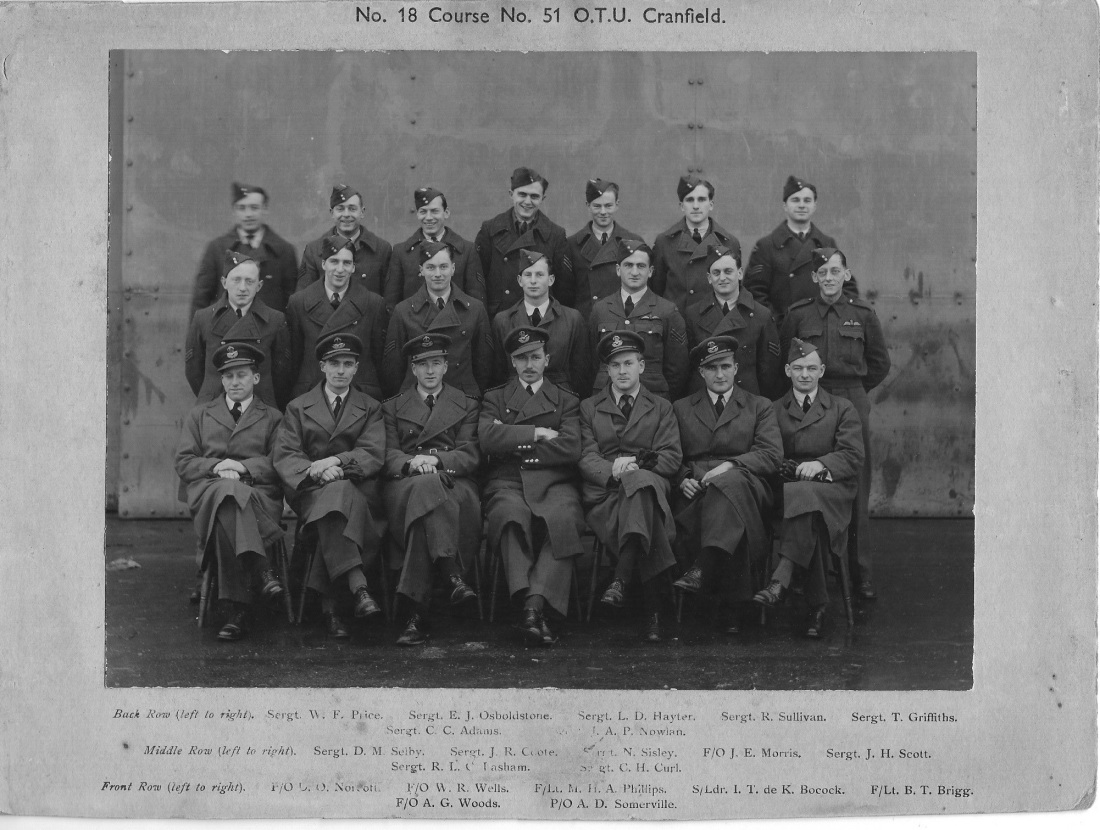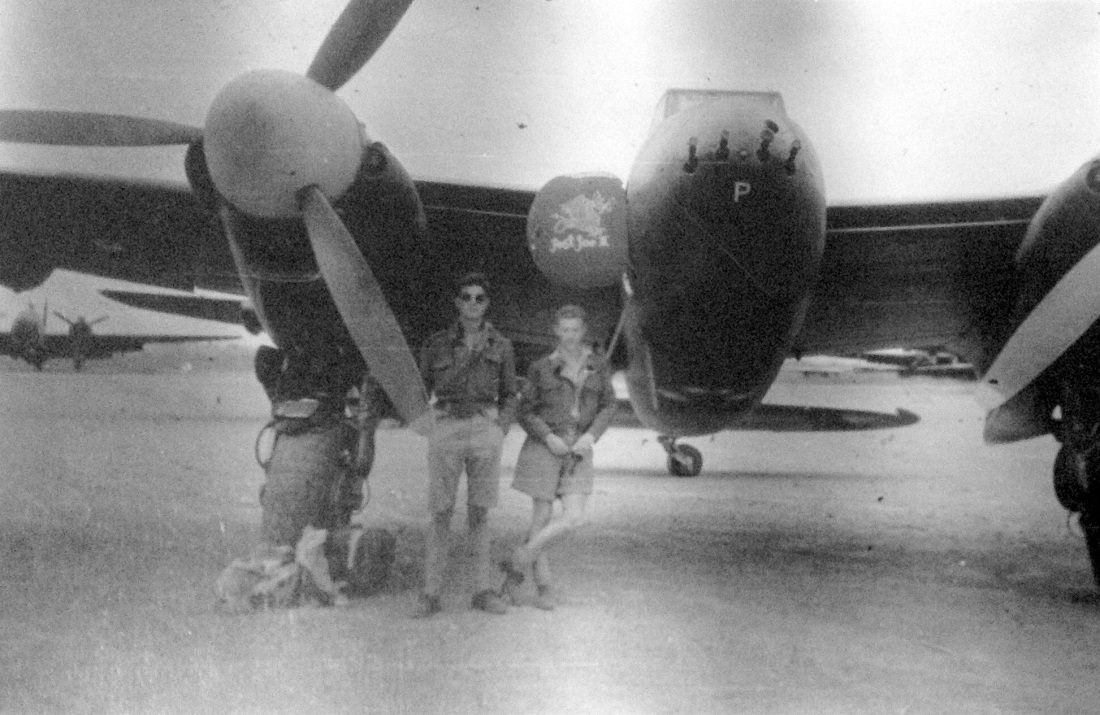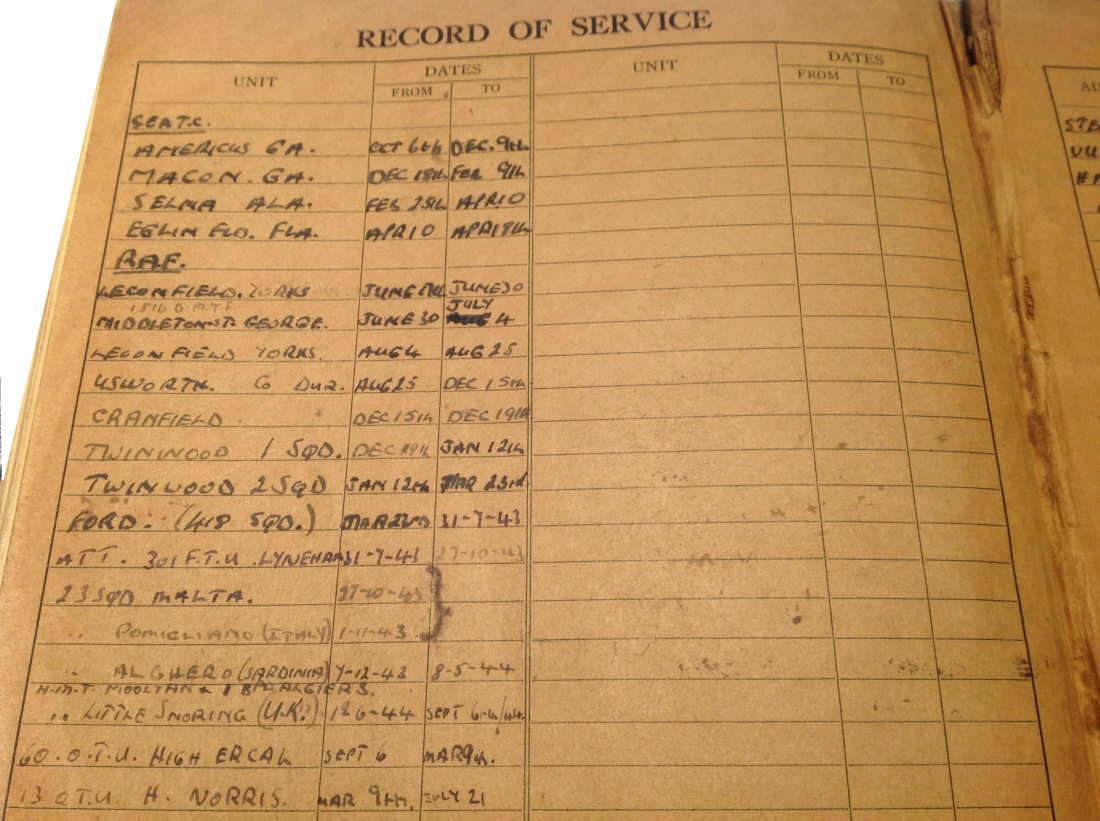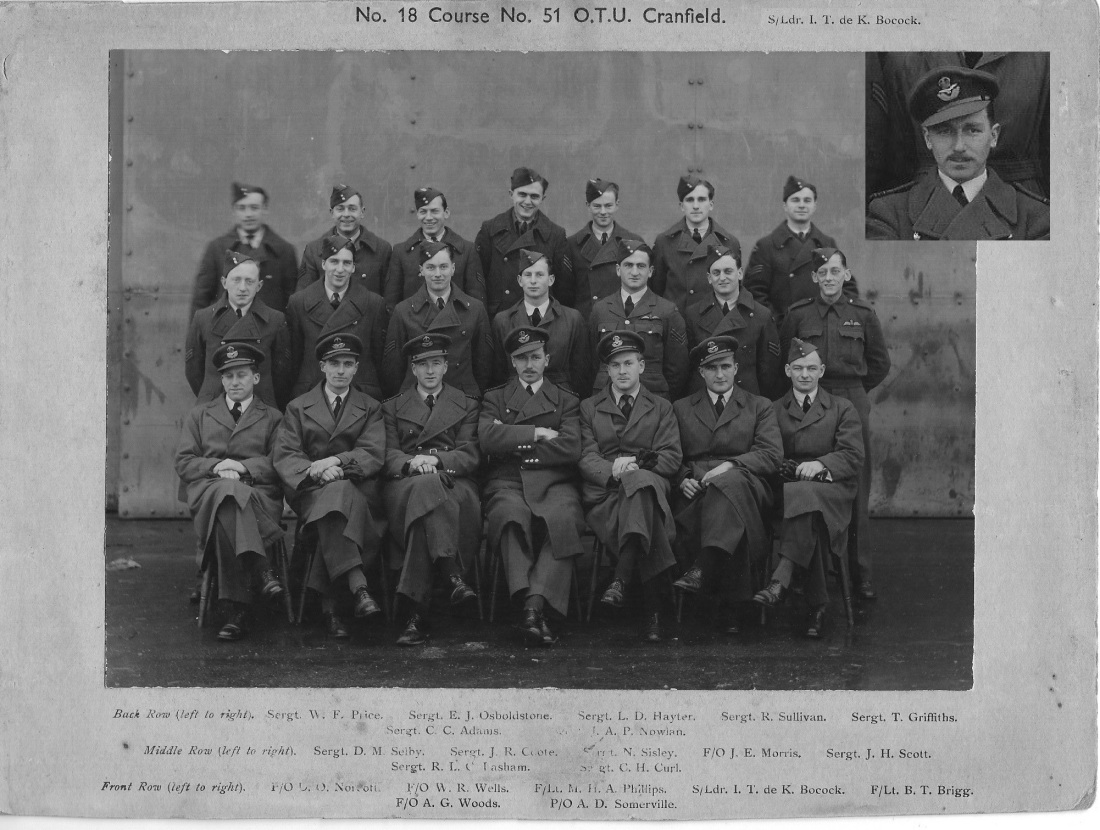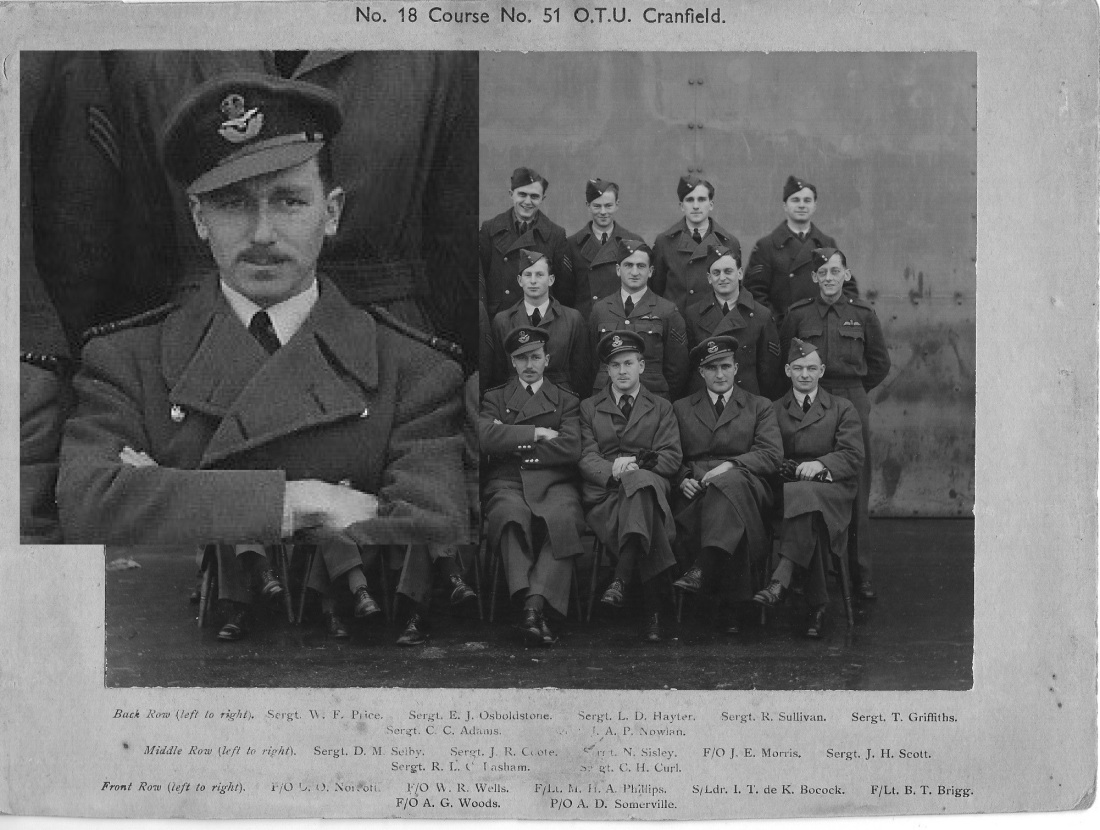This is a group picture from Theo Griffiths’ collection of memorabilia. It has the names on it to pay homage to some of them.
I wonder how many survived the war.
Sergt. W.F. Price, Sergt. E.J. Oboldstone. Sergt. L.D. Hayter, Sergt. R. Sullivan,
Sergt. T. Griffiths, Sergt. C.C. Adams, L.A.P. Nowlan,
Sergt. D.M. Selby, Sergt. J.R. Coote, Sergt. N. Sisley, F/O J.E. Morris, Sergt. J.H. Scott, Sergt. L.R.C. Lasham, Sergt. C.H. Curl,
P/O D.O. Norcott. F/O W.R. Wells, F/L M.H.A. Phillips, S/Ldr I.T. de K. Bocock,
F/L B.T. Brigg, F/O A.G. Woods, P/O A.D. Somerville
Collection Theo Griffiths DFC
Courtesy Richard Cooper
We all know about Theo Griffiths who became a Mosquito pilot with 23 Squadron, won a DFC, and survived the war.
Theo is in the last row.
He was with No. 51 O.T.U. which is an Operation Training Unit of the RAF.Theo’s logbook says he was there in December 1942.
His Squadron Leader was I.T. de K. Bocock according to the caption.
Squadron Leader Ian Maxwell Theodore De Kaap Bocock did not survive the war.
We Never Slept the Story of 605 Squadron
Click above for the PDF
I found this information in the history of 605 Squadron.
Page 77…
The first operational sorties with the Mosquito Mk II took place on the 10th March 1943, but alas it was not an auspicious start with the new machines as Fl Lt Mike Olley AFC and his navigator W/O Vipond were killed on an intruder sortie to Tours. The Squadron log wrote of the men :-
“F/Lt M.G. Olley, apart from being an absolutely first class pilot and an exceptional instructor, was a man of great personal charm and was very good company. His keenness and eager desire to stop the Hun (which were probably his undoing) set a fine example to the other members of the Squadron. W/O H. Vipond was the same sort of NCO that F/Lt Olley was an officer – quiet, efficient and keen. Equally tall, they were a well matched pair.”
S/Ldr de Bocock had the unenviable distinction of being the first pilot to be wounded in combat since the Squadron reformed when he sustained a slight arm injury to his arm on 24th March, when his aircraft was shot up quite badly by flak over Deelen. Not to be overshadowed his navigator, Sgt Brown received a grazed hand during the same flight. On 26th March the Squadron received a limited supply of long range fuel tanks which increased the fuel capacity by 150 gallons, which allowed S/Ldr de Bocock to fly his aircraft on a five hour patrol to Stavanger on the Norwegian coast on the 8th April.
Page 78…
On the 24th April S/Ldr I.M.T. de Bocock and Sgt R. Brown were killed when their Mosquito dived into the ground at Housedean Farm near Lewes, Sussex, the cause of the accident was unknown. S/Ldr de Bocock was a South African, having been posted supernumerary to the Squadron on 1st February 1943 and by his persistence and anxiety to engage the enemy had done much to increase the fighting spirit of the whole Squadron. He had been in the RAF since 1933 and above all he was an excellent comrade, always willing to impart his very wide knowledge of service procedure and flying experiences in a most charming manner to anyone in need of help. There is no doubt that his death was a great loss not only to 605 but to the whole service to which he had devoted his life. Sgt Brown, despite not having been in the Squadron for long was a quiet and self contained man and shared in his pilot’s determination to engage and destroy the enemy.
